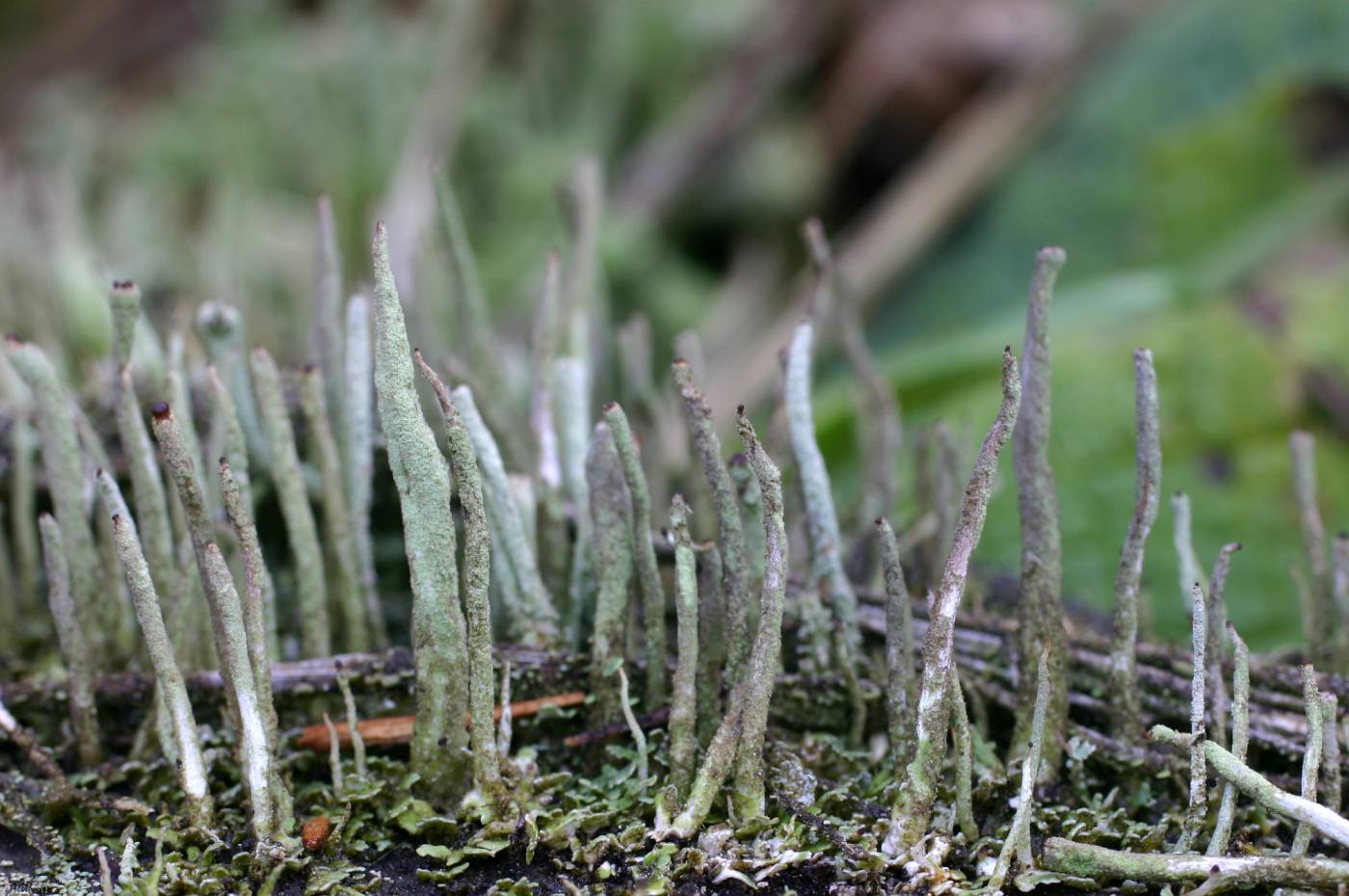A species very similar to C. coniocraea, from which it is distinguished by corticate base and generally most robust podetia, common presence of scyphi and larger primary squamules (Ahti & Stenroos 2013). However, both species are variable and an unequivocal identification is sometimes very difficult. Although C. ochrochlora is not supported by molecular data (Pino-Bodas et al. 2011), Ahti & Stenroos (2013) preserve the taxon and suggest that more detailed studies are necessary.
The species most commonly grows on decaying wood and on tree bases. There are also numerous records from soil or rock. Its European distribution area is not clear due to common confusion with C. coniocraea. C. ochrochlora is probably a common and widely distributed taxon. There are scattered records from most of the area of the Czech Republic.
Literature: Ahti T. & Stenroos S. (2013): Cladoniaceae. – In: Ahti T., Stenroos S. & Moberg R. [eds], Nordic Lichen Flora 5: 87–89. Pino-Bodas R., Burgaz A. R., Martín M. P. & Lumbsch H. T. (2011): Phenotypical plasticity and homoplasy complicate species delimitation in the Cladonia gracilis group (Cladoniaceae, Ascomycota). – Organisms Diversity & Evolution 11: 343–355.
taxonomic classification:Ascomycota → Lecanoromycetes → Lecanorales → Cladoniaceae → Cladonia
Red List (Liška & Palice 2010):LC – least concern
Occurrence in the Czech Republic
All records: 230, confirmed 145. One click on a selected square displays particular record(s), including their source(s).

